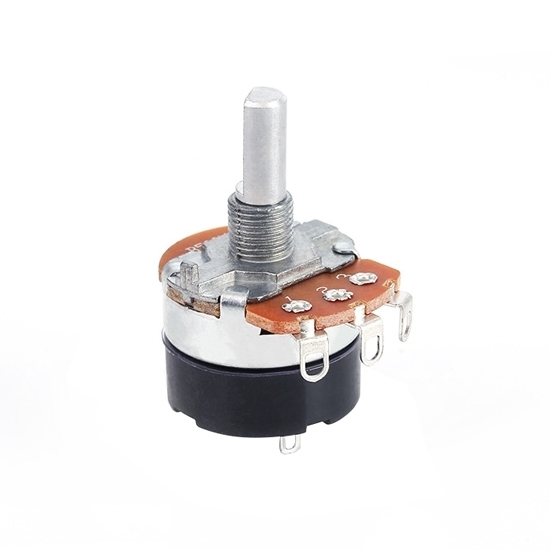
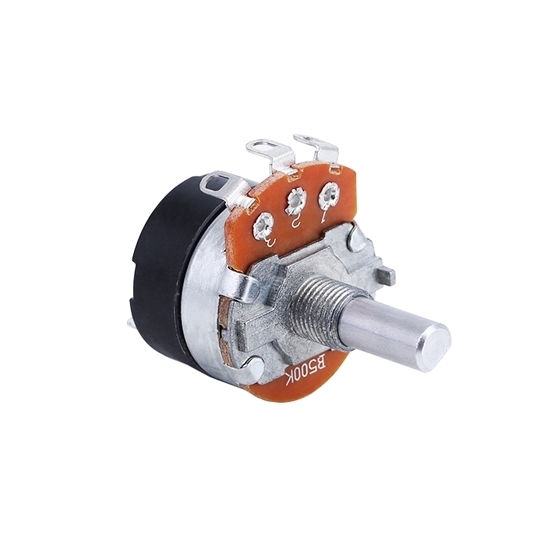
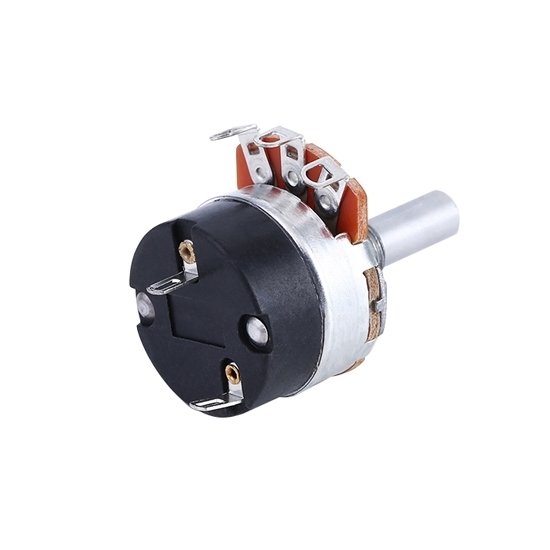
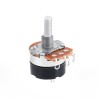
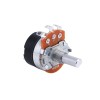
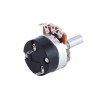
- Stock: In Stock
- Model: RDDLZ-RP-10K
- Weight: 1.00
- SKU: RDDLZ-RP-10K
Available Options
Buy rotary potentiometer with on off switch online, resistance value 10K Ohm. Rotary potentiometer can be used for frequency adjustment, volume adjustment, other requirements can be customized. Our rotary potentiometers are compact and suitable for applications where space is limited.
Specification
- Model: RDDLZ-RP-10K
- Resistance Value: 10K ohm
- Switching Power: 1A
- Temperature Range: -10°C~100°C
- Service Life: ≥ 10,000 cycles, ≥ 20,000 cycles
- Application: Multimedia, speakers, amplifiers, light regulation, etc.
Features
- A rotary potentiometer provides variable resistance along its rotational axis.
- Rotary potentiometers are available in different configurations and sizes, offering a wide range of resistance values and power ratings.
- 10K Ohm rotary potentiometer can be found in various applications, including audio equipment, robotics, industrial control systems, and consumer electronics.
- The potentiometer is designed to be rotated manually, allowing for precise control over the resistance. The resistance value changes proportionally to the angle of rotation.
Dimension (unit: mm)
Applications
Rotary potentiometers are commonly used in a wide range of applications, including audio systems (such as volume control), instrumentation, robotics, and electronic circuits where manual control or adjustment is required. They provide a simple and cost-effective means of adjusting voltage, current, or signal levels in a circuit.
Tips: How does a rotary potentiometer work?
The basic working principle of a rotary potentiometer involves a resistive track, a wiper, and three terminals. The resistive track is a circular strip of resistive material, typically made of carbon or a conductive plastic, which is divided into equal segments. The wiper is a movable contact that slides along the resistive track.
The three terminals of a rotary potentiometer are typically labeled as the "input terminal," "output terminal," and "common terminal." The resistive track is connected between the input and output terminals, while the wiper is connected to the output terminal. The common terminal is usually connected to a fixed voltage or ground.
When the rotary potentiometer is rotated, the wiper moves along the resistive track, creating a changing point of electrical contact. This point of contact determines the resistance between the input and output terminals. As the wiper moves closer to the input terminal, the resistance between the input and output terminals decreases, and as it moves closer to the output terminal, the resistance increases.
By measuring the resistance between the input and output terminals, the position or angle of the rotating object can be determined. This can be done by connecting the input and output terminals to appropriate circuitry, such as an analog- to-digital converter (ADC) or a control system that interprets the resistance value and converts it into a usable form, such as a voltage or digital signal.
